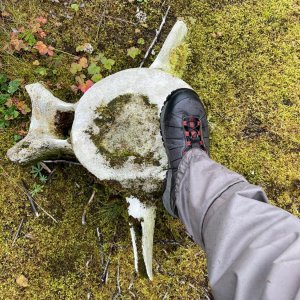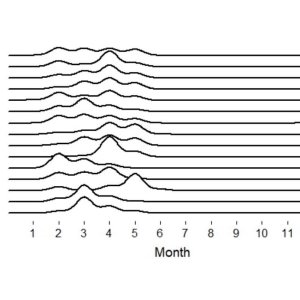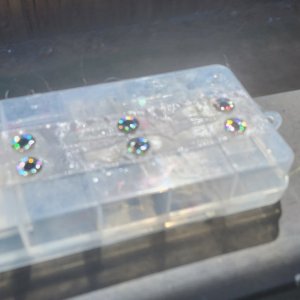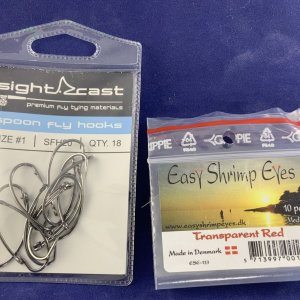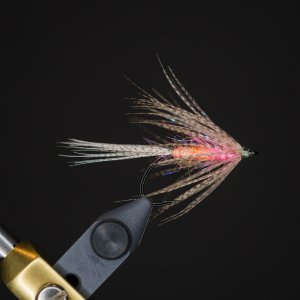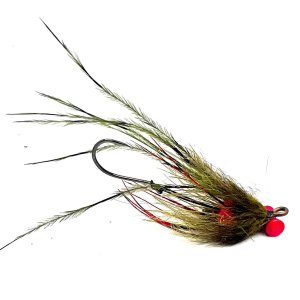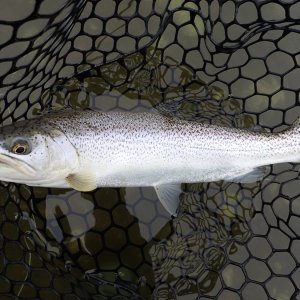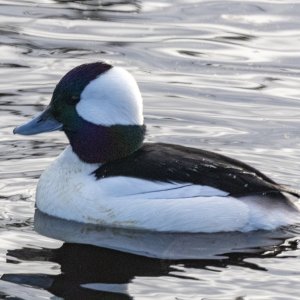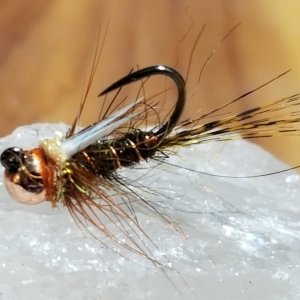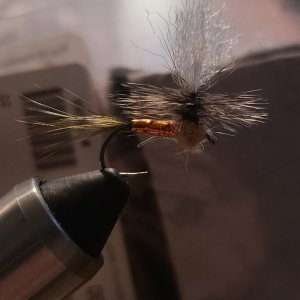WWKimba
Smolt
First, most fly swaps are open to all level and experience tyers - ALL of the swaps I host are. Do NOT feel that you have to be a professional level tyer! They are a fun way to better and widen you tying ability. You simply tie a fly for each participant, they'll do the same and when the host collects them all they will divide the flies so you get back one fly from each of the other swappers.
What do you need for a swap? Just 5 things! Your fly pattern, a toe tag on each fly, a swap box for the swap (reusable), a SASE, and lastly an envelope to send your flies to the host.
Your Flies - A pattern that meets the swaps rules. If the theme is Streamers, you'd tie a steamer pattern NOT a mayfly pattern. The number you'll tie will depend on the total number of swappers who register (for example if there are 9 swappers registered, you'd tie 9 flies of that same pattern). As a courtesy, all hooks used should be barbless or de-barbed.
Toe Tags - Toe tags identify the fly pattern and your screen name. This way swappers will know the name of your fly and that, in fact, you tied it. Toe tags can be paper strips, card stock, or 2 MM foam and can be printed/typed or handwritten. As I mentioned they MUST have your handle and the patterns name BUT you can include other information if you wish - real name, reach info (usually done by professional tyers trying to add to their business), name of the swap, date of the swap, and even the site the swap was offered on. Here's a trick if using paper - leave a blank area at either end of the tag so you can fold it over, now folding the short tag on top pierce the hook point through both thicknesses of the paper, lastly, open the fold to make a hinge. The hinge will lock the hook in place so when the flies travel in the mail the receiver will not get a tag and somewhere else in the swap box a loose fly. I normally use a 10 font in a bold print for my tags.Swap Box - Speaking of swap boxes - they are any plastic or metal box that will protect your flies in the mail. The most common swap box I've seen in my 12 years hosting swaps are Altoids tins but any container (even round) that is no more than 1 1/2" deep will work. The swap box should AT LEAST have your screen name on it. I have seen boxes (mine, for example) that also include you real world name and mailing address on the box as well. Why is the name is impotant ? Imagine being the host and seeing MULTIPLE Altoids tins in front of you without names and I think the answer just might come to you!
SASE - To get your set of swap flies back to you a self-addressed, stamped envelope needs to be part of you swap packet. Most swappers use a manilla-type envelope - either padded or not (remember the swap box will protect your flies). To figure the proper postage you can take your set of 5 items to the post office without being sealed and have the postal worker figure the amount then purchase the postage for you SASE. Now put all of the above and seal them in your sending envelope. Another way to figure the proper postage is to use this official USPS site -
 postcalc.usps.com
postcalc.usps.com
To use, fill in the two ZIP codes and click on the 4th box, now put in the weight (or simply make it 3.6 ounces) and click the second box, now click the 4th box, now go to the bottom of the list and find the First Class rate, this is your postage.
Sending Envelope - Simply another envelope that will hold the swap box that contains your to tagged flies and also your SASE. It will be addressed to the swap host - the swap host will provide their address via PM (in most cases). ANY mailing is STRONGLY advised to be sent via your local post office window so you can get a USPS tracking # to protect you and your efforts. NOTE: The postage will be the same on both the SASE and the sending envelope. Also, the size of the envelope should not affect the postage rate due to the slight difference in mailing weight for a 5" by 8" envelope vs. a 8 1/2" by 12" envelope.
That's it! Swaps are a great way to improve your tying as well as build your collection of fly patterns (with an actual fly to test drive on your water!). Oh, and all the swaps I've ever hosted as well as those I've participated in have one thing in common - THEY ARE FUN!
What do you need for a swap? Just 5 things! Your fly pattern, a toe tag on each fly, a swap box for the swap (reusable), a SASE, and lastly an envelope to send your flies to the host.
Your Flies - A pattern that meets the swaps rules. If the theme is Streamers, you'd tie a steamer pattern NOT a mayfly pattern. The number you'll tie will depend on the total number of swappers who register (for example if there are 9 swappers registered, you'd tie 9 flies of that same pattern). As a courtesy, all hooks used should be barbless or de-barbed.
Toe Tags - Toe tags identify the fly pattern and your screen name. This way swappers will know the name of your fly and that, in fact, you tied it. Toe tags can be paper strips, card stock, or 2 MM foam and can be printed/typed or handwritten. As I mentioned they MUST have your handle and the patterns name BUT you can include other information if you wish - real name, reach info (usually done by professional tyers trying to add to their business), name of the swap, date of the swap, and even the site the swap was offered on. Here's a trick if using paper - leave a blank area at either end of the tag so you can fold it over, now folding the short tag on top pierce the hook point through both thicknesses of the paper, lastly, open the fold to make a hinge. The hinge will lock the hook in place so when the flies travel in the mail the receiver will not get a tag and somewhere else in the swap box a loose fly. I normally use a 10 font in a bold print for my tags.Swap Box - Speaking of swap boxes - they are any plastic or metal box that will protect your flies in the mail. The most common swap box I've seen in my 12 years hosting swaps are Altoids tins but any container (even round) that is no more than 1 1/2" deep will work. The swap box should AT LEAST have your screen name on it. I have seen boxes (mine, for example) that also include you real world name and mailing address on the box as well. Why is the name is impotant ? Imagine being the host and seeing MULTIPLE Altoids tins in front of you without names and I think the answer just might come to you!
SASE - To get your set of swap flies back to you a self-addressed, stamped envelope needs to be part of you swap packet. Most swappers use a manilla-type envelope - either padded or not (remember the swap box will protect your flies). To figure the proper postage you can take your set of 5 items to the post office without being sealed and have the postal worker figure the amount then purchase the postage for you SASE. Now put all of the above and seal them in your sending envelope. Another way to figure the proper postage is to use this official USPS site -
Retail Postage Price Calculator
To use, fill in the two ZIP codes and click on the 4th box, now put in the weight (or simply make it 3.6 ounces) and click the second box, now click the 4th box, now go to the bottom of the list and find the First Class rate, this is your postage.
Sending Envelope - Simply another envelope that will hold the swap box that contains your to tagged flies and also your SASE. It will be addressed to the swap host - the swap host will provide their address via PM (in most cases). ANY mailing is STRONGLY advised to be sent via your local post office window so you can get a USPS tracking # to protect you and your efforts. NOTE: The postage will be the same on both the SASE and the sending envelope. Also, the size of the envelope should not affect the postage rate due to the slight difference in mailing weight for a 5" by 8" envelope vs. a 8 1/2" by 12" envelope.
That's it! Swaps are a great way to improve your tying as well as build your collection of fly patterns (with an actual fly to test drive on your water!). Oh, and all the swaps I've ever hosted as well as those I've participated in have one thing in common - THEY ARE FUN!



